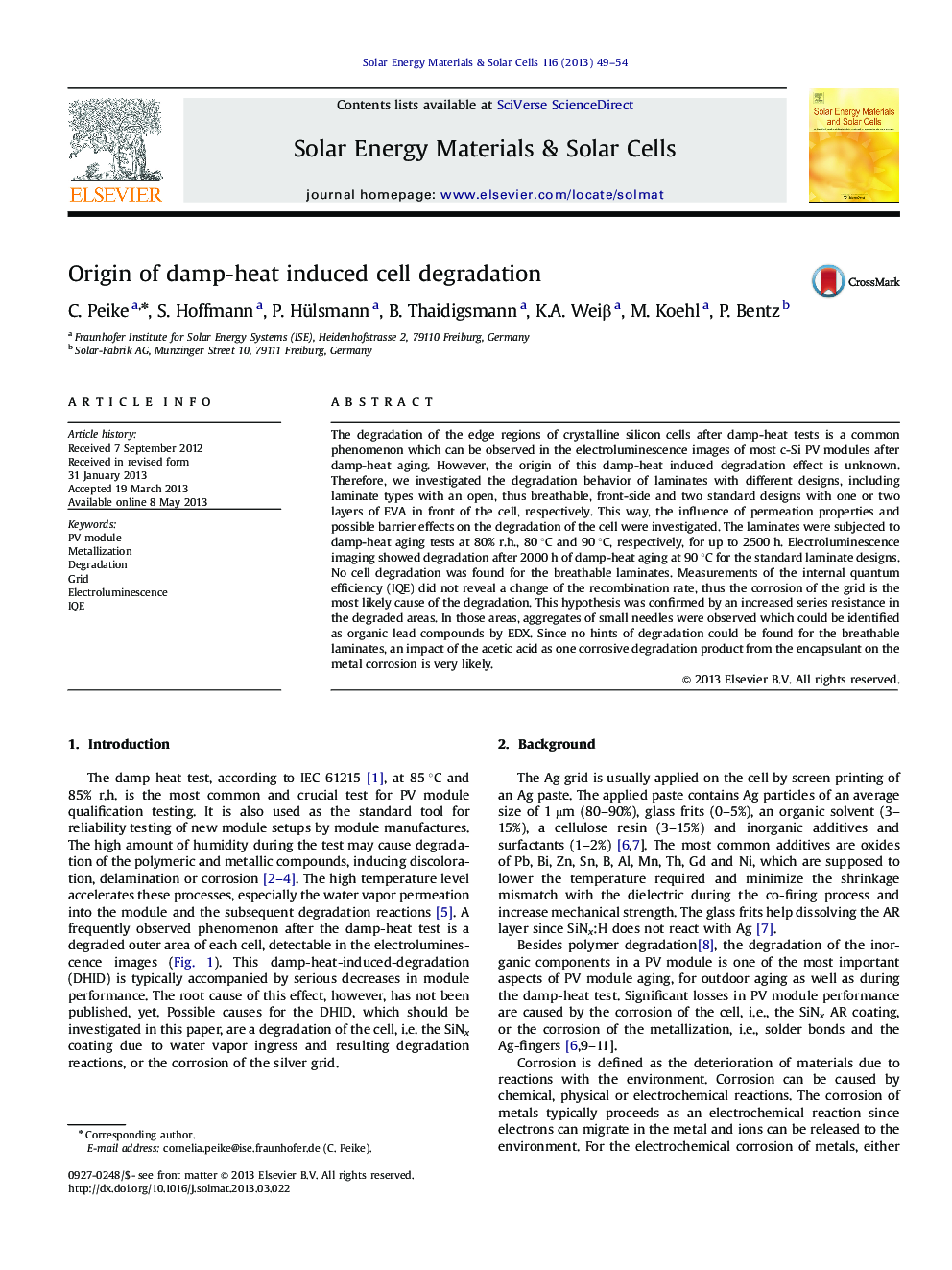| کد مقاله | کد نشریه | سال انتشار | مقاله انگلیسی | نسخه تمام متن |
|---|---|---|---|---|
| 6536210 | 49325 | 2013 | 6 صفحه PDF | دانلود رایگان |
عنوان انگلیسی مقاله ISI
Origin of damp-heat induced cell degradation
ترجمه فارسی عنوان
منشاء تخریب سلول القا شده توسط حرارت خورشید
دانلود مقاله + سفارش ترجمه
دانلود مقاله ISI انگلیسی
رایگان برای ایرانیان
کلمات کلیدی
موضوعات مرتبط
مهندسی و علوم پایه
مهندسی شیمی
کاتالیزور
چکیده انگلیسی
The degradation of the edge regions of crystalline silicon cells after damp-heat tests is a common phenomenon which can be observed in the electroluminescence images of most c-Si PV modules after damp-heat aging. However, the origin of this damp-heat induced degradation effect is unknown. Therefore, we investigated the degradation behavior of laminates with different designs, including laminate types with an open, thus breathable, front-side and two standard designs with one or two layers of EVA in front of the cell, respectively. This way, the influence of permeation properties and possible barrier effects on the degradation of the cell were investigated. The laminates were subjected to damp-heat aging tests at 80% r.h., 80 °C and 90 °C, respectively, for up to 2500 h. Electroluminescence imaging showed degradation after 2000 h of damp-heat aging at 90 °C for the standard laminate designs. No cell degradation was found for the breathable laminates. Measurements of the internal quantum efficiency (IQE) did not reveal a change of the recombination rate, thus the corrosion of the grid is the most likely cause of the degradation. This hypothesis was confirmed by an increased series resistance in the degraded areas. In those areas, aggregates of small needles were observed which could be identified as organic lead compounds by EDX. Since no hints of degradation could be found for the breathable laminates, an impact of the acetic acid as one corrosive degradation product from the encapsulant on the metal corrosion is very likely.
ناشر
Database: Elsevier - ScienceDirect (ساینس دایرکت)
Journal: Solar Energy Materials and Solar Cells - Volume 116, September 2013, Pages 49-54
Journal: Solar Energy Materials and Solar Cells - Volume 116, September 2013, Pages 49-54
نویسندگان
C. Peike, S. Hoffmann, P. Hülsmann, B. Thaidigsmann, K.A. Weiβ, M. Koehl, P. Bentz,
